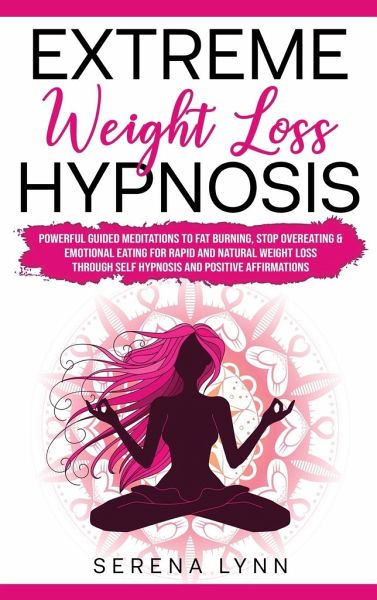
Meditation is one of many treatments for headaches. Research has shown that meditation can reduce tension and lead to relaxation. People who suffer from frequent headaches or migraines may find it very helpful. Meditation helps to identify the cause of the pain. The practice of this meditation can reduce the severity of migraines and help with headaches.
Research has shown that meditation can relieve headache pain. Meditation can reduce pain from headaches. It does this by clearing your mind of any negative thoughts and encouraging sustained focus. Many researchers found that meditation can reduce migraine-related disability as well as pain intensity. It is important to know that mindfulness meditation and kundalini mediation are different. Both allow people to be more present and free from their thoughts.

Although meditation is a great way to relieve headache pain, some people find it difficult. The practice involves the participant focusing solely on the present moment and meditating for long periods. It can be daunting for someone who has never tried meditation. However, there are many methods that can help with migraine pain. It is possible to start practicing meditation once you understand the basics.
Studies have shown that meditation can help reduce migraine intensity and duration. For example, in North Carolina, Wake Forest Baptist Medical Center assigned 19 migraineurs to a program for stress-reduction that included mindfulness meditation and yoga. Each day, participants were required to practice 30 minutes of meditation. Although there was no statistical significance, the participants did experience fewer headaches. Anyone suffering from chronic headaches may find this useful.
Meditation can help with headache pain. But meditation also has other benefits. Meditation helps to relax the body and reduce stress. It also lowers the severity and frequency for migraines. It also improves pain tolerance. One study found that 92 patients were enrolled in a mindfulness-based mediation program. The study subjects were taught to meditate for one hour each day. These results were seen in just four weeks, whereas the participants in the control group received no benefit at all.

Meditation for migraines may be able to reduce the severity and frequency of migraine attacks, according to another study. It increases heart rate variability and helps with cardiovascular health. For those suffering from migraines or chronic headaches, meditation can help. They will be able to live a happier life. It is also a great way to boost their mood. Meditation can reduce the severity and frequency of migraine attacks. It also improves overall health.
FAQ
How to measure bodyfat?
A Body Fat Analyzer will give you the most accurate measurement of body fat. These devices can be used to measure body fat percentages in people who are trying to lose weight.
What are the top 10 healthy habits?
-
Eat breakfast every day.
-
Don't skip meals.
-
Eat a balanced, healthy diet.
-
Get lots of water.
-
Take care your body.
-
Get enough rest.
-
Avoid junk food.
-
Do some form of exercise daily.
-
Have fun
-
Make new friends
Here are 7 ways to live a healthy lifestyle.
-
Be healthy
-
Exercise regularly
-
Rest well
-
Drink plenty of water.
-
Get enough rest
-
Be happy
-
Smile often.
What's the difference of a calorie versus a Kilocalorie?
Calories measure the energy content of food. The unit of measurement is called a calorie. One calorie is the amount of energy required to heat one gram water one degree Celsius.
Kilocalories are another way to describe calories. Kilocalories can be measured in thousandsths of one calorie. 1000 calories is one kilocalorie.
Increase immunity with herbs or supplements
Herbs and natural remedies can be used to boost immune function. Some common examples include garlic, ginger, oregano oil, echinacea, ginkgo biloba, and vitamin C.
These herbal remedies are not meant to replace medical treatment. They may cause side effects such as nausea, diarrhea, stomach cramps, headaches, dizziness, and allergic reactions.
Is it possible to have a weak immune system due to being cold?
It is said that there are 2 types of people: those who love winter (and those who hate it). You may wonder why you feel so bad when it's cold, regardless of whether you love it or hate it.
The reason is simple: Our bodies are made to function well in warm temperatures. Hot climates are where our food sources are most plentiful, and we evolved to thrive there.
However, our environment is quite different than that of our ancestors. We spend much more time indoors, often exposed to extreme temperatures (cold and heat), and we eat foods that are processed rather than fresh.
As a result, our bodies aren't used to such extremes anymore. It means that when we do go outdoors, we are often tired, sluggish or even sick.
However, there are some ways to reduce these effects. The best way to avoid these problems is to ensure that your body stays hydrated throughout the day. If you drink plenty of water, you'll help keep your body properly hydrated and flush toxins from your system.
A healthy diet is another important thing. Your body will stay at its best when you eat healthy foods. This is especially important for those who spend long periods inside.
Consider taking a few moments each morning to meditate. Meditation is a great way to relax your body and mind. It makes it easier for you to cope with stress and illness.
Statistics
- nutrients.[17]X Research sourceWhole grains to try include: 100% whole wheat pasta and bread, brown rice, whole grain oats, farro, millet, quinoa, and barley. (wikihow.com)
- In both adults and children, the intake of free sugars should be reduced to less than 10% of total energy intake. (who.int)
- According to the 2020 Dietary Guidelines for Americans, a balanced diet high in fruits and vegetables, lean protein, low-fat dairy and whole grains is needed for optimal energy. (mayoclinichealthsystem.org)
- Extra virgin olive oil may benefit heart health, as people who consume it have a lower risk for dying from heart attacks and strokes according to some evidence (57Trusted Source (healthline.com)
External Links
How To
What does the meaning of "vitamin?"
Vitamins are organic compounds found naturally in food. Vitamins are essential for our bodies to absorb nutrients from the foods we eat. The body cannot make vitamins; therefore, they must be obtained from food.
There are two types if vitamins: water soluble, and fat soluble. Water-soluble vitamins dissolve readily in water. Vitamin C,B1(thiamine), B2 (2riboflavin), and B3 (3niacin), as well as vitamin C,B1, B2 (riboflavin), and B3 (niacin), vitamin B6 (pyridoxine), vitamin folic acid (biotin), pantothenic, and choline are examples. Fat-soluble vitamins can be stored in the liver or in fatty tissue. Vitamin D, E, K and A are some examples.
Vitamins can be classified according to biological activity. There are eight main groups of vitamins.
-
A - essential for normal growth and maintenance of health.
-
C – essential for proper nerve function.
-
D - essential for healthy bones, teeth, and gums.
-
E - Required for good vision & reproduction
-
K - Essential for healthy muscles and nerves.
-
P - essential for strong bones, teeth and tendons
-
Q – aids digestion of iron and iron absorption
-
R - necessary for making red blood cells.
The recommended daily intake (RDA), of vitamins varies with age, gender and physical condition. The U.S. Food and Drug Administration (FDA) sets the RDA values.
For adults over 19, the RDA for vitaminA is 400 micrograms per daily. Pregnant mothers need 600 micrograms per days because it is vital for the development and growth of their baby. Children ages 1-8 require 900 micrograms per day. Infants below one year old require 700mg per day. But, between 9 months to 12 months, the amount drops to 500mg per day.
Children aged between 1-18 years require 800 micrograms of sugar per day, while overweight children need 1000 micrograms. Children who are underweight receive 1200 micrograms every day to meet their nutritional requirements.
Children aged 4-8 years old who have been diagnosed as having anemia require 2200 micrograms of vitamin C per day.
2000 micrograms per person is necessary for general health. Women who are pregnant or breastfeeding need 3000 micrograms per day due to increased nutrient requirements.
1500 micrograms are required daily by adults over 70 because they lose approximately 10% of their muscle each decade.
Women who are pregnant, nursing or breastfeeding need more than the RDA. Pregnant women need 4000 micrograms per dayduring pregnancy and 2500 micrograms per day after delivery. Breastfeeding mothers need to consume 5000 micrograms every day when breastmilk has been produced.